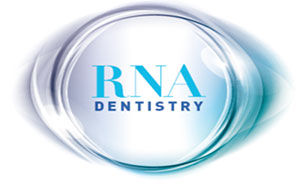Sedation Dentistry Los Angeles & Inglewood
A Comfortable Solution for Dental Anxiety
What is Sedation Dentistry?
Sedation dentistry refers to the use of medications to help patients relax during dental procedures. It is often recommended for individuals who experience extreme anxiety, have a low pain threshold, or need extensive dental work done. Unlike general anaesthesia, which renders a patient completely unconscious, sedation dentistry allows you to remain conscious, but in a deeply relaxed state.
The medication used in sedation dentistry is designed to reduce discomfort and fear, allowing the dentist to perform treatments without the patient feeling anxious or stressed. This method can be applied to a range of dental procedures, from routine cleanings to more complex surgeries.
Who Can Benefit from Sedation Dentistry?
- Patients with Dental Anxiety: Those who experience severe anxiety or fear about dental procedures are ideal candidates for sedation dentistry.
- Low Pain Threshold: Some people have heightened sensitivity to pain or discomfort during dental procedures. Sedation helps minimize these sensations.
- Extensive Dental Work: Patients who need a significant amount of dental work done in one session, such as crowns, fillings, or extractions, can use sedation to remain relaxed throughout the treatment.
- Sensitive Gag Reflex: If you have a strong gag reflex, sedation can help suppress it, making it easier for the dentist to work.
- Children or Patients with Special Needs: Sedation dentistry is often used for children or patients with cognitive impairments or special needs who have difficulty sitting still for dental treatments.
Levels of Sedation Dentistry
- Minimal Sedation: This involves a mild form of relaxation, where the patient is awake but calm. Nitrous oxide, or “laughing gas,” is commonly used for minimal sedation. It wears off quickly and allows you to drive yourself home after the procedure.
- Moderate Sedation: Also known as “conscious sedation,” this level of sedation puts the patient in a drowsy state. You’ll remain conscious and responsive, but you may not remember much of the procedure. Oral sedatives or IV sedation are typically used.
- Deep Sedation: Patients in deep sedation are on the edge of consciousness, but they can still be awakened if necessary. This is typically used for more invasive procedures.
- General Anaesthesia: General anaesthesia renders the patient completely unconscious. This is only used for more complex surgical procedures and is administered in a hospital setting.
Is It Safe to Go for Sedation Dentistry?
Yes, sedation dentistry is considered safe when performed by a trained dental professional. Dentists are specially trained to administer sedatives, monitor your vitals, and ensure your safety throughout the procedure. Before administering sedation, your dentist will review your medical history, current medications, and any potential allergies to determine the safest approach.
While sedation is generally safe, there are a few risks associated with it, such as nausea, drowsiness, or dry mouth post-procedure. However, these side effects are usually mild and temporary. It’s crucial to communicate any pre-existing medical conditions or concerns to your dentist beforehand to minimize risks.
Why Do We Call It Sleep Dentistry as Well?
Sedation dentistry is often referred to as “sleep dentistry,” even though it doesn’t typically involve putting the patient to sleep. The term comes from the deep relaxation or drowsy state that some types of sedation can induce. Patients often feel as though they have slept through the procedure, and in cases of moderate or deep sedation, they may not remember the details of the treatment at all.
The sense of calm and forgetfulness associated with sedation gives the impression of sleep, but you are usually awake and able to respond to the dentist’s instructions during most types of sedation.
Sedation dentistry provides a safe, comfortable solution for those who experience dental anxiety, have a low pain threshold, or need complex dental work done. With various levels of sedation available, patients can feel at ease during their dental visits, whether they require minimal relaxation or deeper sedation. The process is safe and effective when performed by trained professionals, and it’s no wonder why so many people find it helpful for making dental procedures stress-free.
If you’ve been avoiding the dentist due to fear or anxiety, sedation dentistry could be the answer to finally getting the care you need.Visit Us Today!



